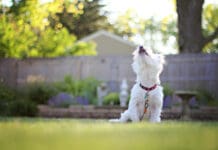You’ve determined the source from which you want to acquire your next dog, or at least identified which sources are the most likely candidates for you. The next question is how. How do you decide which dog is the right one?
Let’s assume the family has come to agreement about breed, or at least variables like size and type. If you’re purchasing a pup from a responsible breeder, she will guide you in selecting the best pup for your circumstances and dog-owning goals. If you want to show or compete, she’ll have a good idea which of her pups are best suited for that. If you want a family companion, she’ll identify which pups in the litter are best suited for that role.
On the other hand, if she thinks your situation is totally unsuited for her breed – an active Border Collie or vocal Sheltie in a small apartment – she’ll tell you that too, and then decline to sell you a puppy. Take her advice to heart, rethink your adoption choice, and don’t just go get a puppy of the same breed from a less responsible source.
If you’re adopting from a good shelter or rescue, they will already have performed behavior assessments on your pool of prospective adoption choices, and will help you make an educated selection. If you’re doing a private adoption or looking to a group that doesn’t assess, you’ll want to do your own assessment to explore a few behaviors before you adopt. Ideally, you will share your home with your new dog for the next 10 or more years, so make sure he’s the dog you really, really want, not one you just felt really sorry for at the shelter.
If you are a novice dog owner, we recommend taking along a more knowledgeable friend, or a behavior/training professional who offers pet selection services, to help you with your decision. If you are reasonably knowledgeable about dogs and dog behavior, you should be able to determine at least some basic important qualities about your prospective adoptee on your own.
Things to look for include:
- Does the dog happily approach to greet you? A fearful dog is probably not well-socialized, and it will take a lot of work (behavior modification) to help him become “normal.” Love is not enough! Unless you are very skilled in training and behavior and ready to commit to a significant behavior modification program, we suggest you resist the temptation to rescue a shy dog, and instead adopt a friendly one. Friendly dogs need homes, too!
- Does the dog play well? He may or may not play with toys (some dogs need to be taught how to play with toys), but will he follow you and romp a little with you? Does he get too aroused while playing, mouthing you, jumping on you, and unwilling to calm down when you’re ready to stop? Does he have a playful world view, or does he seem very serious? Again, a playful dog will be easier to train and bond with; a serious one may be more challenging to motivate and interact with.
- Is he easily aroused? Most pups bite some, as they explore their world with their mouths. But adolescent dogs and adults should have learned that putting teeth on humans isn’t acceptable behavior. If the dog in question gets over-aroused easily, to the point of hard biting, non-stop biting, biting clothes, or growling, snapping, and snarling, he’s a good one to avoid.
- If the dog will take treats, can you get him to sit? Put the treat right at the end of his nose, and slowly move it back over his head. If he jumps up to get it, whisk it out of sight for a second, then try again. When he sits, say “Yes!” and feed him a bit of the treat, then try again. If he starts offering sits for your treat after a few repetitions, you have a solid-gold winner. If it’s difficult to get him to sit, and/or he doesn’t seem to get the idea after several repetitions, he’ll be a more challenging dog to train.
- Try holding him close and looking at his teeth a few times in a row, then (carefully!) hugging him. If he resists restraint and becomes aroused, pulling away from you, perhaps even using his teeth, he probably won’t be a warm, cuddly dog – which is fine if that’s not what you want. Probably not a good choice for kids, though, who tend to want a lot of physical contact with their canine pals.
- Speaking of kids, the dog will need to meet any human youngsters in your immediate family, and should absolutely adore them. Any reluctance on the dog’s part to engage with the kids should rule him out as an adoption prospect. Dogs who live with kids need to love them, not just tolerate them. You should also introduce your adoption prospect to any dogs you currently own before making a final commitment to adopt. Again, ideally you’ll see joyful acceptance on both sides of the canine equation. Anything less is a sign that behavior work might be necessary to keep peace in the pack.
For an expanded list of things to look for and lookout for when looking for a new dog, purchase Whole Dog Journal‘s ebook Adopting a Dog The Right Way.





